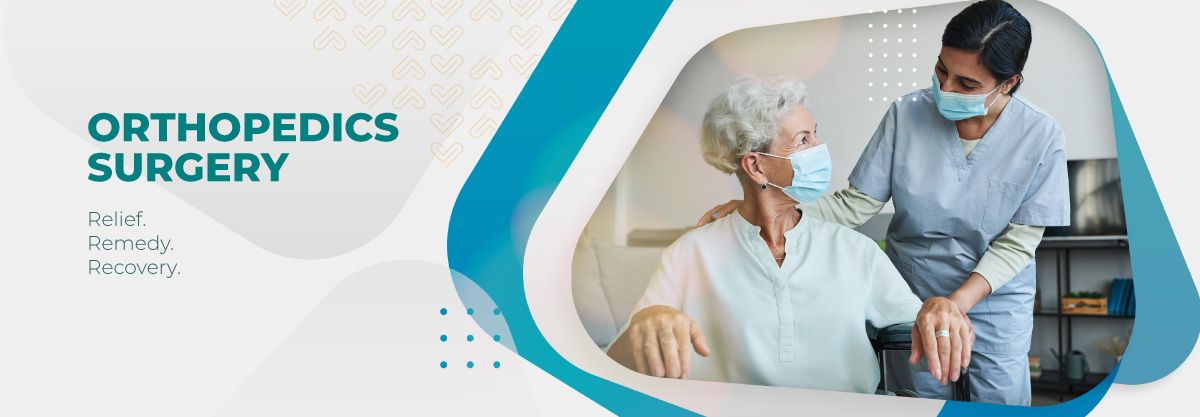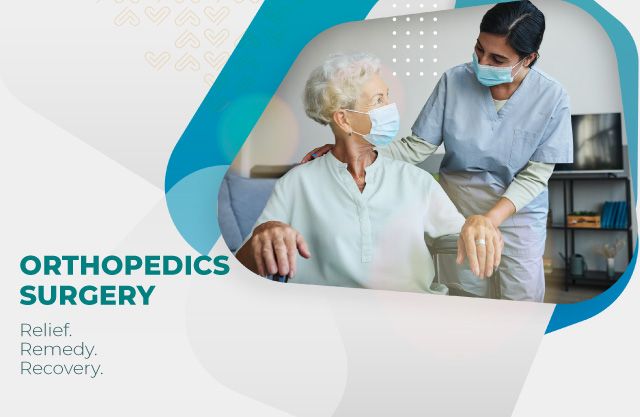Emergency Tel: 211 5157


- Home
- Specialities
- Orthopaedics
Orthopaedics

-
General Orthopaedics
General Orthopaedics encompasses injuries and diseases of the body’s musculoskeletal system. This complex system consists of your bones, joints, ligaments, tendons, muscles and nerves, all of which allow our bodies to move, bend, flex and maintain activity.
Our physicians are trained to diagnose and treat the spectrum of conditions that affect the musculoskeletal system. Treatment involves both surgical and non-surgical options. Common non-surgical options include medication, exercise and other rehabilitative or alternative therapies. Surgical options include arthroscopy, fusion, internal fixation, joint replacement and soft tissue repair. More than one form of treatment may be necessary.
Fractures can occur to anyone, at any time in their life. Treatment of a fracture is focused on restoring function as quickly and as fully as possible. While many fractures will heal on their own, some are best treated surgically. Often, surgical treatment will ensure more complete recovery, and allow for restoration of function much quicker. Although fracture care has been a part of orthopedics since its very beginning, specialists in fracture care are committed to using techniques that are both leading edge and time tested to ensure that your recovery is the best it can be.
Common Diseases include… -
Carpal Tunnel Syndrome
Symptoms
Carpal tunnel syndrome symptoms usually start gradually and include:
- Tingling or numbness. You may notice tingling and numbness in the fingers or hand. Usually the thumb and index, middle or ring fingers are affected, but not the little finger. You might feel a sensation like an electric shock in these fingers.
The sensation may travel from the wrist up the arm. These symptoms often occur while holding a steering wheel, phone or newspaper, or may wake you from sleep.
Many people "shake out" their hands to try to relieve their symptoms. The numb feeling may become constant over time. - Weakness. You may experience weakness in the hand and drop objects. This may be due to the numbness in the hand or weakness of the thumb's pinching muscles, which are also controlled by the median nerve.
Nonsurgical therapy
If the condition is diagnosed early, nonsurgical methods may help improve carpal tunnel syndrome, including:- Wrist splinting. A splint that holds the wrist still while you sleep can help relieve nighttime symptoms of tingling and numbness.
- Nonsteroidal anti-inflammatory drugs (NSAIDs). NSAIDs, such as ibuprofen
- Corticosteroids. Your doctor may inject the carpal tunnel with a corticosteroid such as cortisone to relieve pain.
Surgery:
Open surgery. Your surgeon makes an incision in the palm of the hand over the carpal tunnel and cuts through the ligament to free the nerve. - Tingling or numbness. You may notice tingling and numbness in the fingers or hand. Usually the thumb and index, middle or ring fingers are affected, but not the little finger. You might feel a sensation like an electric shock in these fingers.
-
Hip replacement
Why it's done
Conditions that can damage the hip joint, sometimes making hip replacement surgery necessary, include:- Osteoarthritis. Commonly known as wear-and-tear arthritis, osteoarthritis damages the slick cartilage that covers the ends of bones and helps joints move smoothly.
- Rheumatoid arthritis. Caused by an overactive immune system, rheumatoid arthritis produces a type of inflammation that can erode cartilage and occasionally underlying bone, resulting in damaged and deformed joints.
- Osteonecrosis. If there isn't enough blood supplied to the ball portion of the hip joint, such as might result from a dislocation or fracture, the bone might collapse and deform.
Hip replacement may be an option if hip pain:
- Persists, despite pain medication
- Worsens with walking, even with a cane or walker
- Interferes with sleep
- Affects the ability to walk up or down stairs
- Makes it difficult to rise from a seated position
-
Knee replacement
Why it's done
The most common reason for knee replacement surgery is to relieve severe pain caused by osteoarthritis. People who need knee replacement surgery usually have problems walking, climbing stairs, and getting in and out of chairs. Some also have knee pain at rest. -
Arthroscopy
It is a procedure for diagnosing and treating joint problems. A surgeon inserts a narrow tube attached to a fibre-optic video camera through a small incision — about the size of a buttonhole. The view inside your joint is transmitted to a high-definition video monitor.
Why it's done
Doctors use arthroscopy to help diagnose and treat a variety of joint conditions, most commonly those affecting the:- Knee
- Shoulder
- Elbow
- Ankle
- Hip
- Wrist
Diagnostic procedures
Doctors often turn to arthroscopy if X-rays and other imaging studies have left some diagnostic questions unanswered.
Surgical procedures
Conditions treated with arthroscopy include:- Loose bone fragments
- Damaged or torn cartilage
- Inflamed joint linings
- Torn ligaments
- Scarring within joints
-
Achilles Tendon Rupture
The Achilles tendon is a strong fibrous cord that connects the muscles in the back of your calf to your heel bone. If you overstretch your Achilles tendon, it can tear (rupture) completely or just partially.
Nonsurgical treatment
This approach typically involves:- Resting the tendon by using crutches
- Applying ice to the area
- Taking over-the-counter pain relievers
- Keeping the ankle from moving for the first few weeks, usually with a walking boot with heel wedges or a cast, with the foot flexed down
Surgery
The procedure generally involves making an incision in the back of your lower leg and stitching the torn tendon together. Depending on the condition of the torn tissue, the repair might be reinforced with other tendons. -
Laminectomy
Laminectomy is surgery that creates space by removing bone spurs and tissues associated with arthritis of the spine. It usually involves removing a small piece of the back part (lamina) of the small bones of the spine (vertebrae). Laminectomy enlarges the spinal canal to relieve pressure on the spinal cord or nerves. Laminectomy is often done as part of a decompression surgery.
Why it's done
Bony overgrowths of the joints in the spine can build up within the spinal canal. They can narrow the space for the spinal cord and nerves. This pressure can cause pain, weakness or numbness that can radiate down arms or legs.
Because laminectomy restores spinal canal space, it's likely to relieve the pressure that causes the radiating pain. But the procedure doesn't cure the arthritis that caused the narrowing. So, it's not likely to relieve back pain.
A health care provider might recommend laminectomy if:- Conservative treatment, such as medication or physical therapy, fails to improve symptoms
- Muscle weakness or numbness makes standing or walking difficult
- Symptoms include loss of bowel or bladder control
In some situations, laminectomy may be necessary as part of surgery to treat a herniated spinal disk. A surgeon may need to remove part of the lamina to get to the damaged disk.
Doctor Schedule
Doctors scheduled for the week.
| Monday & Wednesday | 11hr - 13hr | Dr Seenavassen Munisamy |
| Monday & Wednesday | 11hr - 13hr | Dr Bhujun Hemlall |
Doctors and Specialists of Orthopedics
Contact Us
-

4, Labourdonnais Street,
Port-Louis -

(230) 211 5157
(230) 211 5181
(230) 211 7559 -

(230) 211 4647
Follow Chisty Shifa Clinic
Patients
Publications
Terms & Conditions | Privacy Policy | COPYRIGHT © 2022 Chisty Shifa.
All rights reserved. Powered by Nova Interaction


